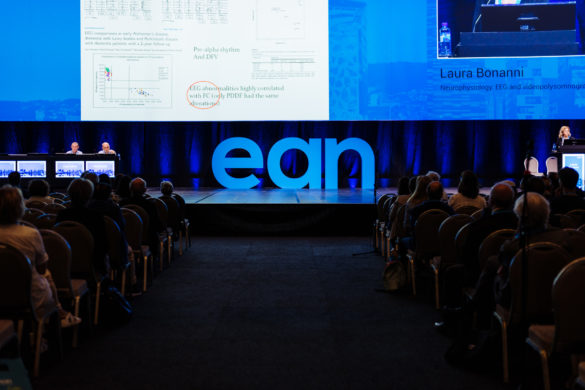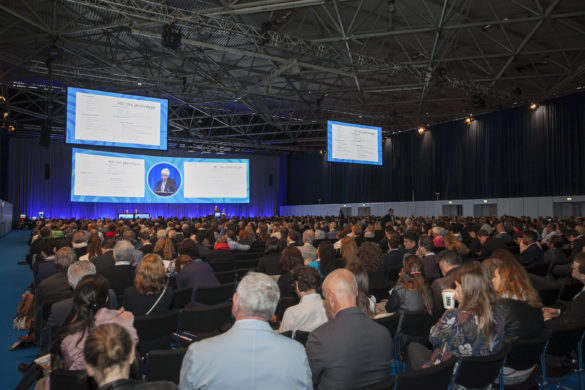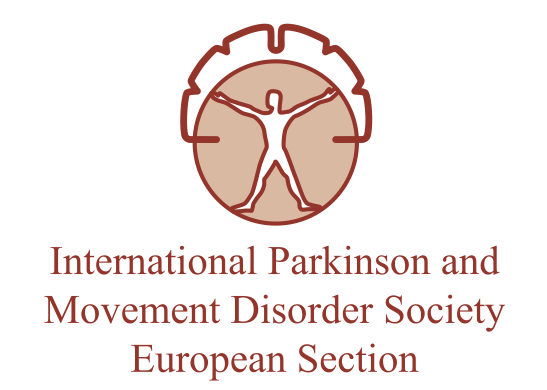Symposium
EHF/EAN Topical Symposium: CGRP antibodies: a new class of migraine-specific preventive medication
M5, Mon, 2016-05-30, 14.45-16.45
Chairpersons
Messoud Ashina, Frederiksberg, Denmark
Dimos-Dimitrios Mitsikostas, Athens, Greece
- Current treatment for migraine: efficacy and safety outcomes
Julio Pascual, Santander, Spain. - The role of CGRP in migraine: from molecule to man
Messoud Ashina, Frederiksberg - CGRP antibodies in treatment of migraine: efficacy and mechanism of action
Peter J Goadsby, London, United Kingdom - Can acute and preventive migraine medication pass the blood-brain barrier?
Gitte Moos Knudsen, Copenhagen, Denmark
Prof. Pascual raised the question of whether we need new acute or preventive treatments for patients with migraine. Based on the current available literature, all triptans have shown to have a moderate positive effect (30-40% efficacy for pain-free at 2 hours and 20% for sustained pain free). Moreover, even if triptans are generally well tolerated, the rate of adverse events is not infrequent, and up to a third of patients are not satisfied with acute treatments. Regarding current preventive therapies, tolerability is the most important issue with a noticeable proportion of patients having adverse events (5-20%), those leading to low compliance to these therapies. Taking everything into account, he came to the conclusion that there is the need for new treatments in migraine.
Prof. Ashina reviewed the history of CGRP in migraine, starting from the discovery of the peptide thirty years ago to the development of the first CGRP-receptor antagonist. CGRP is increased in migraine attacks, and CGRP infusions can induce migraine attacks in about 60% of patients. CGRP-induced migraine is associated with the dilatation of the middle meningeal artery and is blocked by triptans. It is still unknown why CGRP do not provoke migraine in some people. Current studies on antibodies might bring some more light into this important issue.
Prof. Goadsby reviewed the history of CGRP antagonist (gepants) that have showed great efficacy in clinical trials in patients with episodic migraine. However, most of them will not be used in clinical practice because of safety issues although there are still ongoing clinical trials. Human or humanized antibodies against CGRP have been used in five clinical trials in the last few years in patients with episodic and chronic migraine. All these studies have shown positive results and a good tolerability with no serious adverse events. The effect of these treatments in episodic cluster headache is still under investigation. The positive effect of these treatments will likely mark the beginning of a new era.
Prof. Knudsen pointed out that we still do not know the exact mechanisms of action of current migraine treatments, such as triptans or CGRP antibodies. Although most of the molecules are believed not to cross the blood-brain barrier, some structural changes might permit the penetration of some of these drugs. New multimodal imaging techniques such as PET-MRI are being used to study the biological effects of drugs in the CNS and might help to understand the mechanisms of action of the current migraine treatments. (#ean2016)
Elisa Cuadrado Godia, MD, PhD, Spain.















